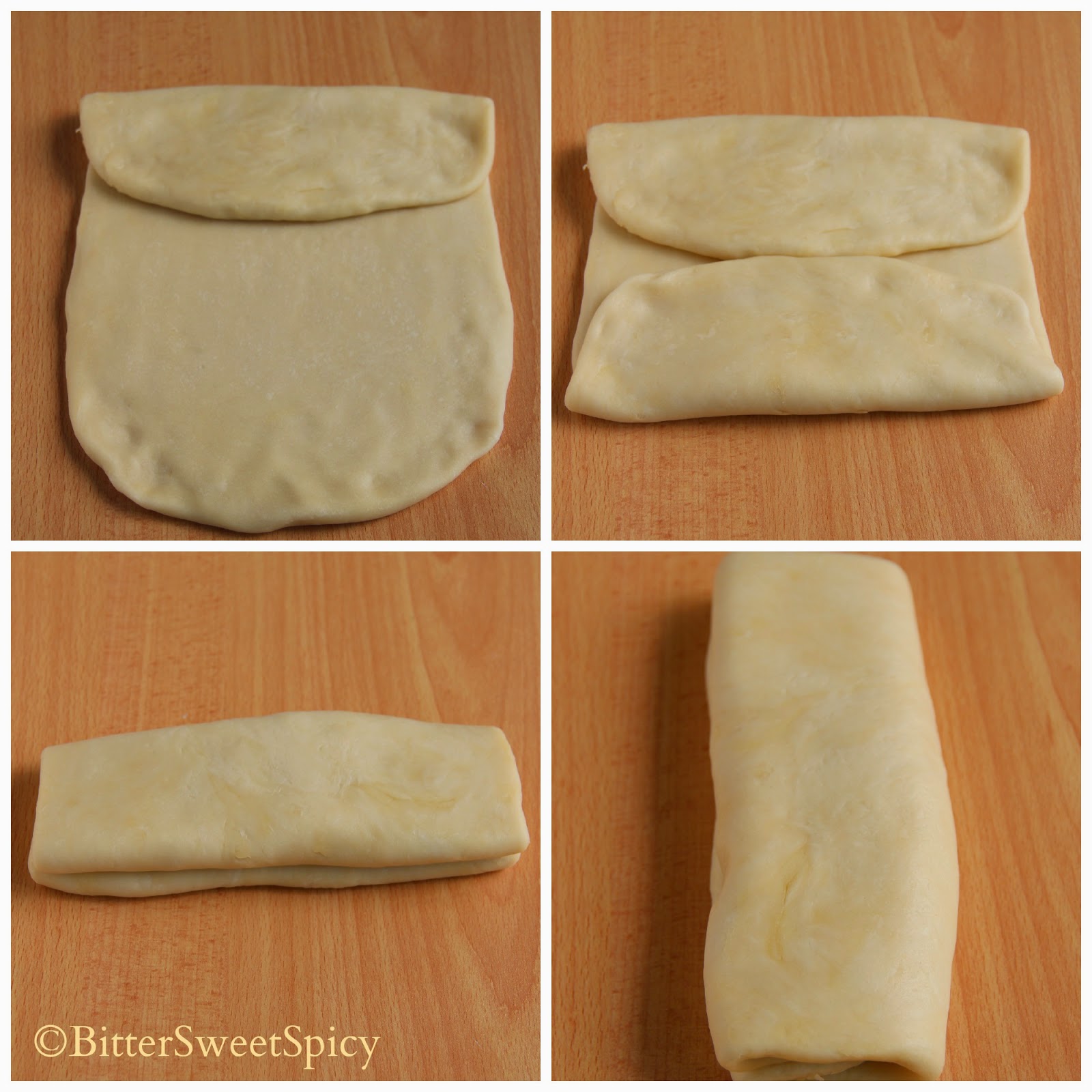After my first attempt with making Bingka Ambon, I've tried a couple of other recipes but they are not as good as the one by Majalah Sedap. So here I am with my bingka ambon again. I used the same recipe as before but with some changes.
This time, I reduced the amount of yeast used, hoping that the yeast flavour would be more subtle. Since I reduced the yeast, I thought I should up the fermentation period.
The bingka turns out pretty much as expected. The yeast flavour is definitely less overbearing, & the bingka still has beautiful honeycomb texture. The only problem, which I think you must have noticed, the surface of my ambon has rather big holes on it... I wonder if it's caused by the longer fermentation period.... I wanted to experiment one more time before posting it here, but I think my family & neighbour are having binka-ambon overload. I got a hint from my mum... she asked why I've been making bingka ambon lately..... So I'll have to wait for a while before I can carry on with my bingka ambon learning journey. Or if any of you out there would like to try out this recipe, you can start baking it after 2 hours of fermentation. Let me know how it turns out.
Bingka Ambon
Yeast mixture:
50g plain flour
60 ml water
4g instant yeast
Other ingredients:
150 ml coconut milk from 1/2 coconut - I used thick, freshly-squeezed coconut milk.
1-2 kafir lime leaves, a.k.a. daun limau purut (torn)
1 pandan leave
1/2 tsp salt
180g sugar
110g tapioca flour
10g glutinous rice flour
3 whole eggs
1 egg yolk
yellow colouring (optional) - I didn't use.
Method:
- Combine all ingredients for yeast mixture. Mix thoroughly & leave aside for 15 minutes.
- Combine coconut milk, kafir lime leaves, pandan leave, salt & sugar in a pot & cook, stirring continuously, until mixture boils. Remove from fire & strain mixture. Set aside 225ml.
- Combine tapioca & glutinous rice flour. Add in warm coconut milk mixture & mix using hand whisk or cake mixer. Add in yeast mixture & continue mixing.
- Add in egg one at a time & continue mixing for about 15 minutes. Leave mixture aside for 4 hours.
- Heat up Kuih Baulu mould on a stove using low fire & grease it using vegetable oil.
- Stir mixture thoroughly & pour it into the mould until 3/4 full.
- Once little holes start to form on the surface of the bingka, cover the mould. Leave to cook for few minutes.
- Remove bingka from mould & repeat process.
Notes & modifications:
- This recipe makes about 50 pieces.
- While baking the bingka, you will need to adjust the fire accordingly. You may encounter some problems, like bingka stuck to the mould or burnt bingka, with at least the first batch. Don't worry, it will get better after a few batches.
- I've reduced the yeast by slightly more than a third this time & doubled the fermentation time from 2 hours to 4 hours. I wonder if the longer fermentation time had caused the big holes on the surface...
Adapted from recipe by Majalah Sedap Bil 18 Vol 2 2009.
I'm submitting this post to Asian Food Fest: Indonesia, hosted by Alice from I Love. I Cook. I Bake.
I'm submitting this post to Asian Food Fest: Indonesia, hosted by Alice from I Love. I Cook. I Bake.






























